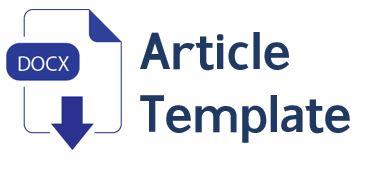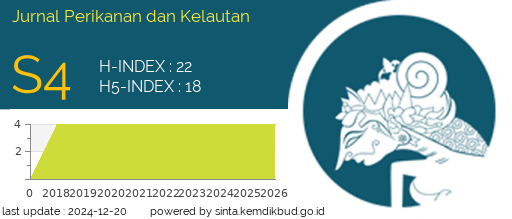Microplastic Content in the Digestion of Freshwater Mussels (Pilsbryoconcha exilis) at Different Depths in Koto Panjang Reservoir, Riau
DOI:
https://doi.org/10.31258/jpk.30.2.173-179Keywords:
Pilsbryoconcha exilis, Digestion, MicroscopeAbstract
Microplastics are small pieces of plastic that can pollute the environment. This study aims to determine the types of microplastics in the digestion of freshwater kijing based on different stocking densities and water depths. This research was carried out from February to April 2024. Using the experimental method with a one-factor Group Random Design. Sampling of the kijing was observed after 2 weeks of laying according to the specified depth, and then the abundance of microplastics in the digestion of freshwater kijing was examined. Water quality parameters are measured by temperature, brightness, and pH. The study found five microplastic types: fiber, fragments, films, granules, and pellets. The most common type of microplastic found at all three different depths is the type of film. The microplastic abundance found at all three depths in order is 5.2, 5,4 and 6 particles/ind. From the ANOVA results, the depth has a p-value of 0.00850, which means that the p-value > 0.005 does not show any difference between depth data. While the p-value of the treatment is 0.00084, this means that the p-value of <0.005 is the difference between the treatment data. Treatments consisting of 1kg, 2kg, and 3kg had different abundance data in each treatment. This means that there are significantly different results by the treatment of microplastic abundance data in freshwater mussel
Downloads
References
Alshawafi, A., Analla, M., Alwashali, E., & Aksissou, M. (2017). Assessment of Marine Debris on the Coastal Wetland of Martil in the North-East of Morocco. Marine Pollution Bulletin, 117(1-2): 302-310
Azizah, P., Ridlo, A., & Suryono, C.A. (2020). Mikroplastik pada Sedimen di Pantai Kartini Kabupaten Jepara Jawa Tengah. Journal of Marine Research, 9(3): 326-332.
Boerger, C.M., Lattin, G.L., Moore, S.L., & Moore, C.J. (2010). Plastic Ingestion by Planktivorous Fishes in the North Pacific Central Gyre. Marine pollution bulletin, 60(12): 2275-2278.
Boucher, J. (2017). Primary Microplastics in the Oceans: A Global Evaluation of Sources. IUCN Portal.
Brennecke, D., Ferreira, E.C., Costa, T.M., Appel, D., da Gama, B.A., & Lenz, M. (2015). Ingested Microplastics (> 100 mm) are Translocated to Organs of the Tropical Fiddler Crab Uca rapax. Marine pollution bulletin, 96(1-2): 491-495.
Browne, M.A. (2015). Sources and Pathways of Microplastics to Habitats. Marine Anthropogenic Litter, 229-244.
Cole, M., Lindeque, P., Fileman, E., Halsband, C., & Galloway, T.S. (2015). The Impact of Polystyrene Microplastics on Feeding, Function and Fecundity in the Marine Copepod Calanus helgolandicus. Environmental Science & Technology, 49(2): 1130-1137.
Damayanti, R.A. (2021). Analisis Kelimpahan Mikroplastik pada Sedimen Waduk Selorejo Kabupaten Malang. Universitas Brawijaya.
Ebere, E.C., Wirnkor, V.A., Ngozi, V.E., & Chukwuemeka, I.S. (2019). Macrodebris and Microplastics Pollution in Nigeria: First Report on Abundance, Distribution and Composition. Environmental Analysis, Health and Toxicology, 34(4).
Edy, M., Budijono, B., & Hasbi, M. (2021). Identification of Microplastics in Water Column at Koto Panjang Dam, Kampar Regency, Riau Province. Berkala Perikanan Terubuk, 49(3): 1353-1362.
Fachrul, M.F., Rinanti, A., Tazkiaturrizki, T., Agustria, A., & Naswadi, D.A. (2021). Degradasi Mikroplastik pada Ekosistem Perairan oleh Bakteri Kultur Campuran Clostridium sp dan Thiobacillus sp. Jurnal Penelitian dan Karya Ilmiah Lembaga Penelitian Universitas Trisakti, 304-316.
Farrell, P., & Nelson, K. (2013). Trophic Level Transfer of Microplastic: Mytilus edulis (L.) to Carcinus maenas (L.). Environmental pollution, 177: 1-3.
Friadi, A., Purwanto, E., & Budijono, B. (2023). Kandungan Mikroplastik pada Air berdasarkan Kedalaman di Waduk PLTA Koto Panjang, Kabupaten Kampar, Provinsi Riau. Jurnal Fisika Unand, 12(3), 438-444.
Galgani, F. (2015). The Mediterranean Sea: From litter to microplastics. MICRO2015, 15.
Kadar, E. (1997). Filtration by Unionid Mussels as a Potential Tool in Bioremediation of Waste Water. Thesis M. Sc. http://www.ceu.hu/../index.htm/.
Kingfisher, J. (2011). Microplastic Debris Accumulation on Puget Sound Beaches. Port Townsend Marine Science Center
Komarawidjaja, W. (2006). Kajian Adaptasi Kijing Pilsbryoconcha exilis sebagai Langkah Awal Pemanfaatannya dalam Biofiltrasi Pencemar Organik di Perairan Waduk. Jurnal Teknologi Lingkungan BPPT, 7(2): 147071.
Kulla, O.L.S., Yuliana, E., & Supriyono, E. (2020). Analisis Kualitas Air dan Kualitas Lingkungan untuk Budidaya Ikan di Danau Laimadat, Nusa Tenggara Timur. Pelagicus, 1(3): 135-144.
Li, J., Lusher, A.L., Rotchell, J.M., Deudero, S., Turra, A., Bråte, I.L.N., Sun, C., Hossain, M.S., Li, Q., Kolandhasamy, P., & Shi, H. (2019). Using Mussel as a Global Bioindicator of Coastal Microplastic Pollution. Environmental Pollution, 244: 522-533.
Margaretha, L.S., Budijono, F. M., & Fauzi, M. (2022). Identifikasi Mikroplastik pada Ikan Kapiek (Puntius schawanafeldii) di Waduk PLTA Koto Panjang Kabupaten Kampar Provinsi Riau. Jurnal Perikanan dan Kelautan, 27(2), 235-240.
Rocha-Santos, T., & Duarte, A.C. (2015). A Critical Overview of the Analytical Approaches to the Occurrence, the Fate and the Behavior of Microplastics in the Environment. TrAC Trends in analytical chemistry, 65: 47-53.
Safitri, A., Melani, W.R., & Muzammil, W. (2021). Komunitas Makrozoobentos dan Kaitannya dengan Kualitas Air Aliran Sungai Senggarang, Kota Tanjungpinang. Acta Aquatica: Aquatic Sciences Journal, 8(2): 103-108.
Sari, N., Amin, B., & Yoswaty, D. (2021). Analysis of Microplastic Content in Lokan (Geloina erosa) in North Beach Waters of Bengkalis Island, Riau Province. Asian Journal of Aquatic Sciences, 4(1): 13-20.
Sayekti, R.W., Yuliani, E., Bisri, M., Juwono, P., Prasetyorini, L., Sonia, F., & Putri, A.P. (2015). Evaluation Study of Water Quality and Trophic States of Selorejo Reservoir due to the Eruption of Mount Kelud for Aquaculture. Jurnal Teknik Pengairan, 6: 133-145.
Ulfa, D.A., Purwanto, E., & Budijono, B. (2021). Identifikasi Mikroplastik pada Ikan Mas (Cyprinus Carpio) di Waduk PLTA Koto Panjang Kabupaten Kampar Provinsi Riau. Jurnal Perikanan dan Kelautan, 27(2): 145-150
Yona, D., Zahran, M.F., Fuad, M.A.Z., Prananto, Y.P., & Harlyan, L.I. (2021). Mikroplastik di Perairan: Jenis, Metode Sampling, dan Analisis Laboratorium. Universitas Brawijaya Press.
Yunanto, A., Sarasita, D., & Yona, D. (2021). Analisis Mikroplastik pada Kerang Kijing (Pilsbryoconcha exilis) di Sungai Perancak, Jembrana, Bali. JFMR (Journal of Fisheries and Marine Research), 5(2): 445-451.
Zhou, Q., Zhang, H., Fu, C., Zhou, Y., Dai, Z., Li, Y., Tu, C., & Luo, Y. (2018). The Distribution and Morphology of Microplastics in Coastal Soils Adjacent to The Bohai Sea and the Yellow Sea. Geoderma, 322: 201-208.
Downloads
Published
Issue
Section
License
Copyright (c) 2025 Hanna Margaretta Hutagalung, Budijono Budijono, Andri Hendrizal (Author)

This work is licensed under a Creative Commons Attribution 4.0 International License.






